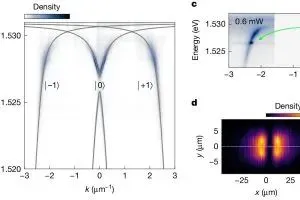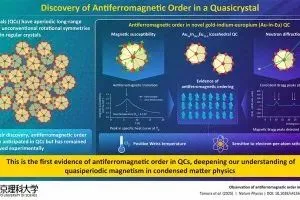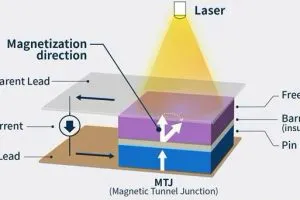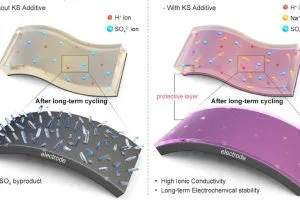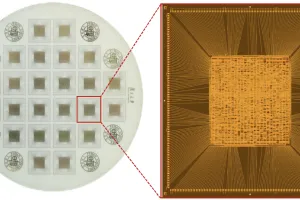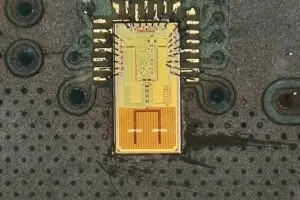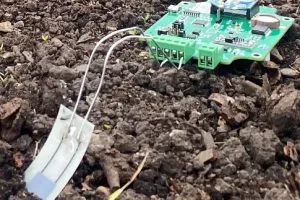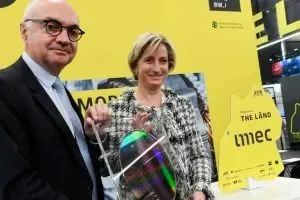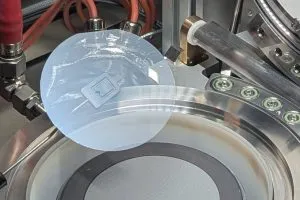An international group of scientists have used laser light shone onto gallium arsenide to make a super-solid – matter which behaves like both a liquid and a solid. “This is the first time a super-solid has been realised with light,” says researcher Daniele Sanvitto, head of the advanced photonics group at CNR-Nanotec at Lecce, “the potential applications go beyond fundamental ...
Research
The latest electronics research news from within the industry and universities from around the world.
DESI maps 13m galaxies
The Dark Energy Spectroscopic Instrument (DESI) project has released a 270TB dataset mapping 13.1 million galaxies and 1.6 million quasars. The map covers more than 14,000 square degrees of sky – nearly one-third of the entire night sky. DESI allows researchers to map objects up to 11 billion light-years away. DESI can observe patterns in the cosmos called baryonic acoustic ...
Antiferromagnetism discovered in quasicrystals
Researchers have discovered antiferromagnetism in a quasicrystal. The team was led by Ryuji Tamura from the Department of Materials Science and Technology at Tokyo University of Science (TUS), along with Takaki Abe, also from TUS, Taku J. Sato from Tohoku University, and Max Avdeev from the Australian Nuclear Science and Technology Organisation and The University of Sydney. Quasicrystals (QCs) are ...
20ps spin junction photo detector
TDK has demonstrated a fast optical sensor based on a magnetic tunnelling junction – a spin photo detector. The device is extremely fast in turning on – 20ps has been measured when hit by a femtosecond laser pulse. [Ed: an earlier version of this article incorrectly stated ’20ns’] It has a stack of two Co22Fe58B20 magnetic layers separated by a magnesium ...
Tree gum leads to longer lasting supercapacitors
The University of Glasgow has found a way to stabilise aqueous supercapacitors, using a gum taken from the bark of an Indian tree. It’s research team started with a simple supercapacitor made from carbon-based electrodes with a sulphuric acid electrolyte. While not a commercial formulation, it is “one kind of which is mostly researched in the conventional supercapacitor literature” Jun ...
2D 32-bit RISC-V processor
Chinese researchers have built a 32-bit RISC-V processor using molybdenum disulfide (MoS2) on sapphire substrate. The researchers generated wafer-scale sheets of MoS2, which is just over one atom thick, on a sapphire substrate. The processor, called RV32-WUJI, has 6000 transistors, operates at KHz speeds and can execute the full RISC-V 32-bit instruction set. We’ve identified a wide range of what ...
Imec shows photonics-enabled CDM FMCW 144FH radar
Imec has built and tested a proof-of-concept photonics-enabled code-division multiplexing (CDM) frequency-modulated continuous wave (FMCW) 144GHz distributed radar system that ensures coherent chirps to remote radar units. Demonstrating successful range measurements, imec’s PoC paves the way for multi-node radar systems with superior angular resolution compared to single-node setups. Looking ahead, this technology could revolutionize next-generation driver assistance solutions and other ...
Compostable pH sensor
The University of Glasgow has created a pH sensor for soil testing that can be composted at the end of its life. It is an impedance-based sensor, using screen-printed interdigitated carbon-based electrodes on a substrate made from the bio-degradeable polymer PHBV (poly(3-hydroxybutyrate-co-3-hydroxyvalerate)). Also deposited using screen-printing, the sensitive layer over the electrodes is molybdenum disulfide which, said the university, breaks down ...
Imec launches Stuttgart advanced chip design accelerator
Belgian research lab Imec has launched a chip design accelerator with the State Government of Baden-Württemberg. ACDA (Advanced Chip Design Accelerator) will be based at the Innovation Park Artificial Intelligence, in Heilbronn, north of Stuttgart. Part of Imec’s automotive chiplet program, it will develop chiplets, packaging, sensing and edge AI technology. “By adding this complementary expertise to Imec’s existing automotive ...
Swansea University starts 4inch gallium oxide line for power research
Swansea University in Wales has installed gallium tri-oxide (Ga2O3) deposition equipment at its Centre for Integrated Semiconductor Materials (CISM). In the β crystal form, Ga2O3 is an ultra-wide bandgap semiconductor (~4.8eV), suiting it to high voltage semiconductors. The semiconductor can also be used in ultra-violet detectors. CISM has an MOCVD (metal-organic chemical vapour deposition) laboratory built around Aixtron equipment, to ...
